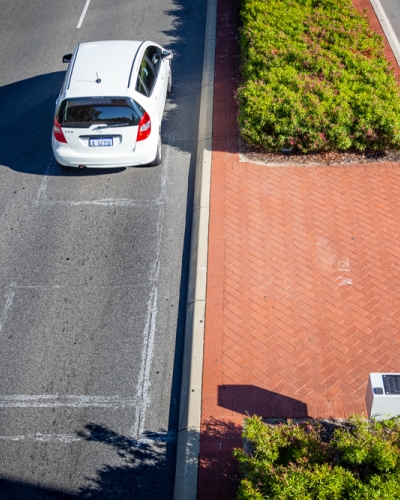Collection Technologies
Falkirk Council in Scotland combines a range of data collection technologies to effectively monitor their road network. As Transport Planning Officer, Sean McCabe explains, “We manage about 90 permanent ATC sites. In addition, we install tube counters on roads that do not have a permanent site. We try to monitor every road on our network, every 3 years or less, based on the availability of resources.”
Inductive loop sensors are a tried and tested technology for monitoring traffic, however, in recent years MetroCount have innovated the approach to data collection, transmission, and storage. MetroCount’s RoadPod VL counters now record detailed statistics about each lane of traffic. Per-lane information includes individual vehicle speed, length and the gap between vehicles. Storing information at this low level enables flexibility when summarising data according to a range of filters.
“We have a range of traffic counters including MetroCount RoadPod VT 5600’s and we recently purchased your RoadPod VL 5810 fixed loop counters. I find your counters superior in almost every way. The data they provide goes into far more detail and I particularly like how I can transform the data file back in the office.”
“I find your counters superior in almost every way. The data they provide goes into far more detail”
Retrofitting the RoadPod VL to Existing Induction Loops
One of the strengths of the RoadPod VL system is the extensive set of diagnostic tools available to assess the suitability of existing loop sites.
In the south of the UK, Traffic Monitoring Engineer Mike Cartwright from CORMAC Consultancy manages an extensive network of loop counters.
“Your loop counters work absolutely fine on our existing two-loop sites.
“The biggest selling points for MetroCount’s RoadPod VL loop counters, as far as I’m concerned, are reliability and battery life.”
Most of our sites in Cornwall are simple two-loop counting sites; either permanent or on rotation. The sites are usually used for monitoring long-term trends (i.e. the data isn’t needed weekly or even monthly), so instead of having to carry out battery changes every 3 or 4 weeks, which is what we do with the older lead-acid battery powered sites, we can now go out every 3 or 4 months. The time savings are huge and the counters seem reliable enough to be left for this long.”
Multilane Site Coverage
The technology currently available for accurately monitoring busy multilane roads (+3 lanes/direction) requires permanently embedded systems. Affordable and easy to install, induction loops are the most common solution.
Due to their modular design, the RoadPod VL counters have no limitation on the number of lanes of traffic that can be monitored. In addition, our telemetry system enables remote site diagnostics and data download with minimal data loss and improved redundancy.
Putting Data to Work
According to Sean, Falkirk Council uses its traffic data for several internal and external applications.
“Our data feeds into our Local Transport Strategy which is published every 5 years (approx). We also deal with other traffic-related requests from the general public and the police, such as speed surveys.”
As there are several systems and sensors available for traffic monitoring, it is up to the authorities to ensure they are gathering accurate and practical data. From the beginning, MetroCount has a strong commitment to helping its clients make the most of their data through education and software support.
Got a great MetroCount story? Share it with us and let the world know the great work you're doing in your community.
